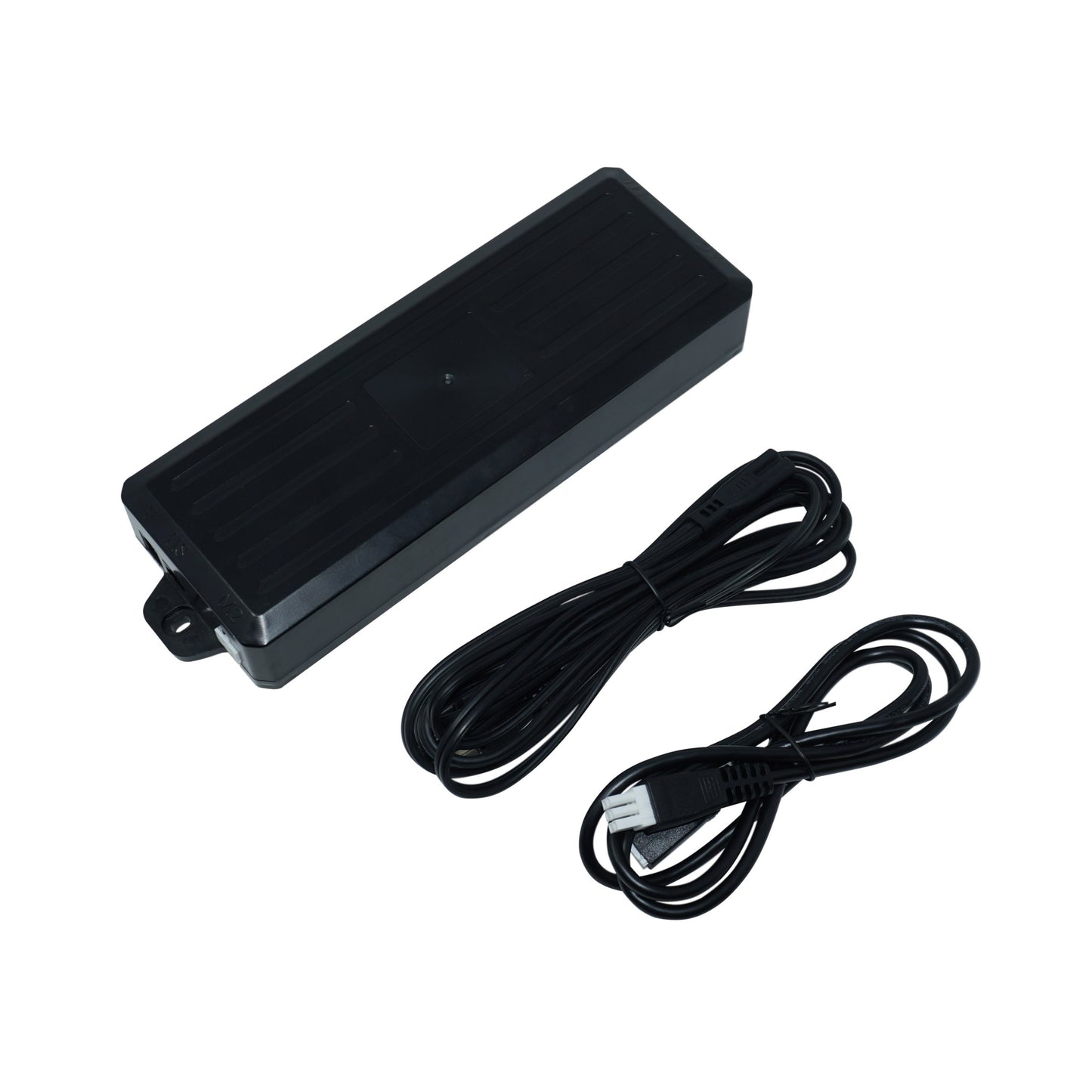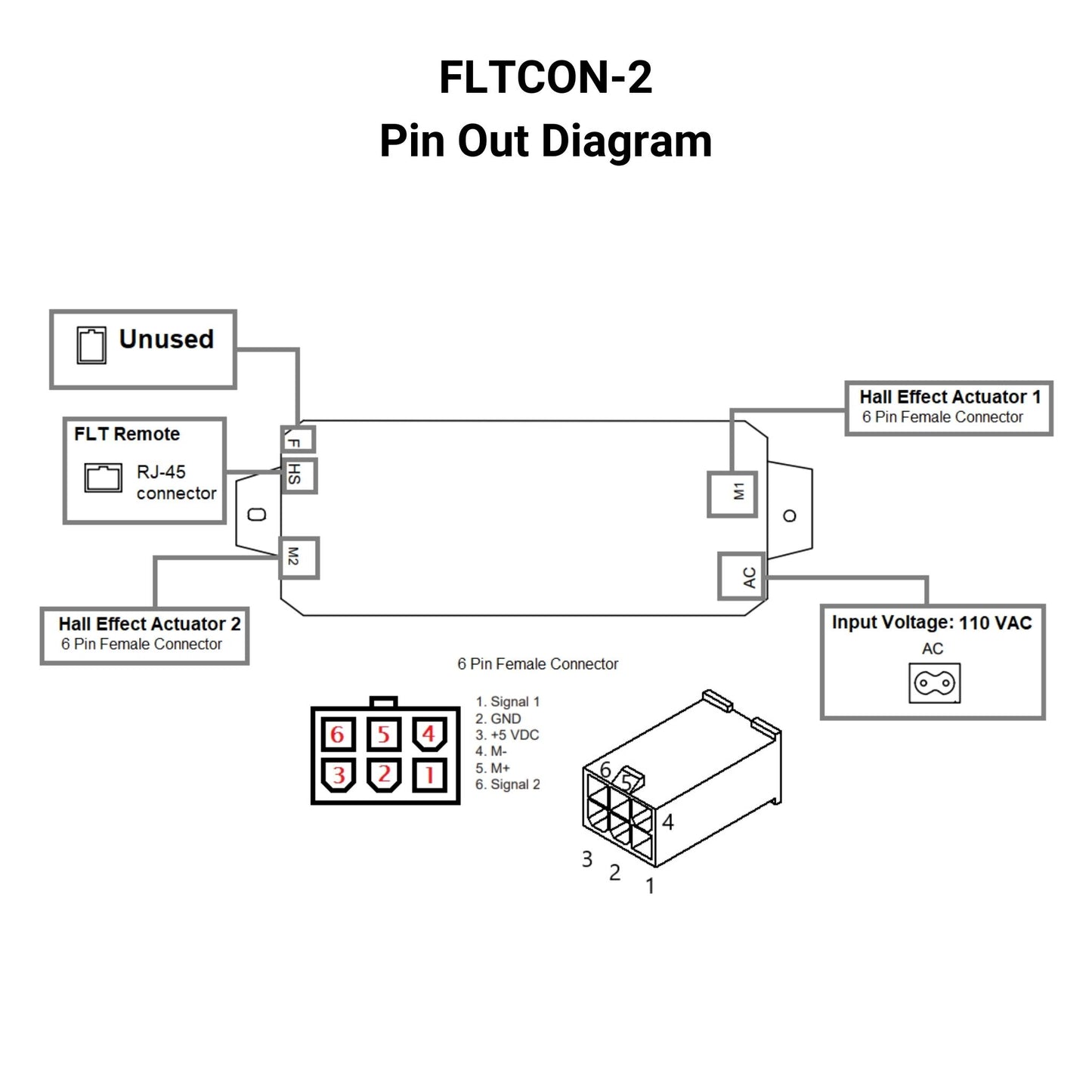




Le boîtier de commande à effet Hall FLTCON-2 est un boîtier de commande à 2 canaux qui synchronise la course entre deux actionneurs linéaires, colonnes de levage ou système de levage équipés de capteurs à effet Hall. Jumelez des actionneurs tels que PA-04-HS à ce boîtier, disponible avec un moteur 24 VDC et capteurs à effet Hall. Ce boîtier de commande peut également fonctionner comme boîtier de commande de remplacement pour nos systèmes de levage de bureau debout FLT-02, FLT-03-2-2, FLT-06, FLT-07 et FLT-10.
Veuillez contacter nos représentants pour savoir comment remplacer un boîtier de commande existant pour ces modèles.
Si vous recherchez une solution alternative pour une entrée 24 VDC , consultez notre FLTCON-2-24VDC , qui offre des fonctionnalités similaires, pour les applications 24 VDC. La série de boîtiers de commande FLTCON n'inclut pas de télécommande à fil, mais vous pouvez consulter notre section Télécommande pour trouver celle qui est la mieux adaptée à votre application!
Options sur mesure
Vous recherchez un actionneur mais les spécifications ne correspondent pas exactement à ce dont vous avez besoin ? Nous avons une longue liste de capacités pouvant être faites sur mesure pour vous assurer d'obtenir exactement ce dont vous avez besoin pour votre projet. Téléchargez la fiche technique de ce produit et découvrez vos options sur mesure !
Le boîtier de commande à effet Hall FLTCON-2 est un boîtier de commande à 2 canaux qui synchronise la course entre deux actionneurs linéaires, colonnes de levage ou système de levage équipés de capteurs à effet Hall. Jumelez des actionneurs tels que PA-04-HS à ce boîtier, disponible avec un moteur 24 VDC et capteurs à effet Hall. Ce boîtier de commande peut également fonctionner comme boîtier de commande de remplacement pour nos systèmes de levage de bureau debout FLT-02, FLT-03-2-2, FLT-06, FLT-07 et FLT-10.
Veuillez contacter nos représentants pour savoir comment remplacer un boîtier de commande existant pour ces modèles.
Si vous recherchez une solution alternative pour une entrée 24 VDC , consultez notre FLTCON-2-24VDC , qui offre des fonctionnalités similaires, pour les applications 24 VDC. La série de boîtiers de commande FLTCON n'inclut pas de télécommande à fil, mais vous pouvez consulter notre section Télécommande pour trouver celle qui est la mieux adaptée à votre application!
Options sur mesure
Vous recherchez un actionneur mais les spécifications ne correspondent pas exactement à ce dont vous avez besoin ? Nous avons une longue liste de capacités pouvant être faites sur mesure pour vous assurer d'obtenir exactement ce dont vous avez besoin pour votre projet. Téléchargez la fiche technique de ce produit et découvrez vos options sur mesure !
Le respect de normes est crucial pour notre entreprise afin de s'assurer que nos produits et services sont à un niveau de qualité qui garantie la satisfaction de la clientèle. Chez Progressive Automations, nous ne visons que le meilleur pour nos clients et nous nous continuons d'innover. Pour cette raison, nous sommes ravis d'annoncer que Progressive Automations est désormais certifié ISO 9001:2015 !
En savoir plus





